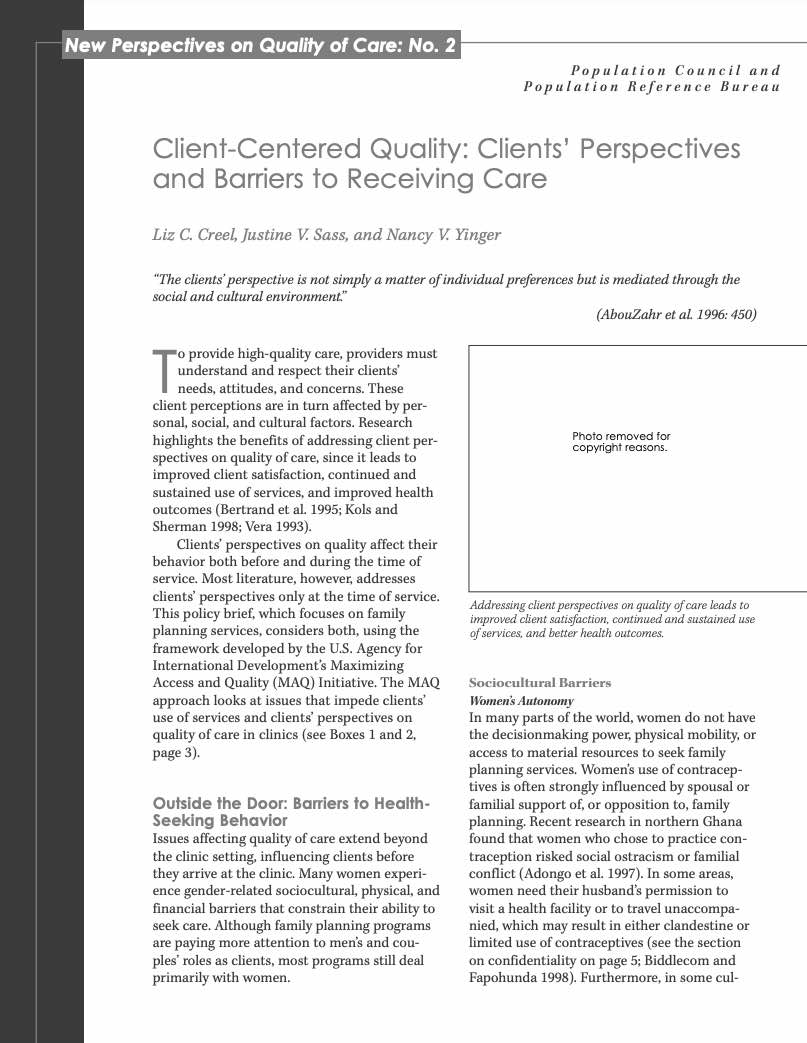PRB Discuss Online: How Can Family Planning Programs Reduce Poverty? Evidence From Bangladesh
(2010) Family planning is one of the most cost-effective health interventions in the developing world.
(2010) Family planning is one of the most cost-effective health interventions in the developing world.
(2010) will mark the sixth anniversary of the earthquake that spawned a tsunami on the coastlines of countries bordering the Indian Ocean.
(2010) Most poor children achieve less, exhibit more problem behaviors, and are less healthy than children raised in more-affluent families. Looking beyond these well-known correlations between poverty and negative outcomes in childhood, recent studies have assessed the effects of childhood poverty in the United States on later attainment and health.

To provide high-quality care, providers must understand and respect their clients' needs, attitudes, and concerns. These client perceptions are in turn affected by personal, social, and cultural factors.
(2008) Millions of people live in poverty in Latin America, and many young people often face few prospects for a bright future.

Project: International Media Program
Where do developing country policymakers get the information on which they base their public policy decisions?
(2002) Sitcoms and talk shows have brought gay men and lesbians into the living rooms of average Americans, and talking about sexual orientation has become less taboo in recent years. But beyond stereotypes, what do we know about real-life homosexuals?
(2009) One in three women will experience an act of violence in their lifetime, whether it is domestic and interpersonal violence; sexual violence; violence in the name of "culture" or tradition; or systemic violence, as in the use of rape as an instrument of war.
(2011) In her new book, The Future Faces of War: Population and National Security, author Jennifer Dabbs Sciubba argues that the future of warfare will be shaped by demographic trends in fertility, mortality, and migration.